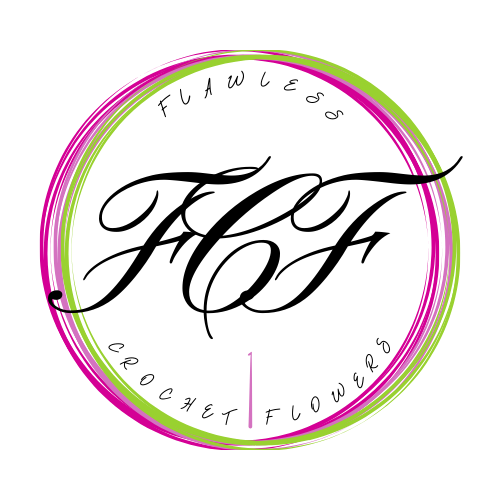Hey crochet Gardeners!
Ever wondered how to make your crochet flowers look as lush and full as those in a real garden? The secret is layering your petals. This simple technique can take your flowers from flat and basic to vibrant and three-dimensional. Let’s dive deeper\ into how you can add some serious flair to your crochet blooms.
Why Layer Your Petals?
Layering petals isn't just about making your flowers look pretty – although that’s definitely a bonus! It’s about giving them depth and dimension. When you add layers, your flowers start to pop, looking more lifelike and intricate. Think of it like giving your flowers a makeover, adding volume and texture that you can’t achieve with single-layer petals.

Crochet Distant Drums Garden Rose
Let’s Talk Layers
When adding your petals, start at the flower base, adding as many layers as you like. I would always recommend you use the actual bloom as a reference by either using a real bloom or a really clear image. Each layer can have petals of different sizes or shapes. The variety makes your flower look more natural and interesting.
Imagine you’re making a rose. Start with smaller petals in the center and gradually make larger ones for the outer layers. Overlap them slightly to mimic a blooming rose. Or picture a sunflower – a large central disc surrounded by layers of narrow petals. For a lotus, go with wide, pointed petals, and stagger them slightly for that natural look.
Placing the Petals
For a truly natural look, place each petal in between two petals from the previous layer. This staggering technique mimics the way petals grow in real flowers, creating a more organic and realistic appearance.

Grab The Free Amaryllis Pattern Plus More In The FREE PATTERN LIBRARY!
Take Your Bloom To The Next Level By Using the Fibonacci Sequence
If you're looking to take your crochet flowers to the next level, consider incorporating the Fibonacci sequence. This famous mathematical sequence (0, 1, 1, 2, 3, 5, 8, 13, ...) appears frequently in nature, including in the arrangement of flower petals.
Using Fibonacci in Your Flowers:
- Petal Count: Follow the Fibonacci sequence to determine the number of petals in each layer. Start with 1 or 2 petals in the center, then add layers with 3, 5, 8, and so on.
- Natural Look: Using the Fibonacci sequence can help your flowers look more natural and pleasing to the eye, as this pattern is widely found in real flowers.
Tips for Success
- Consistent Thread: Stick with the same type of thread for all layers to keep your flower uniform.
- Play with Colors: Mix different colors for each layer to create eye-catching combinations.
- Maintain Tension: Keep your stitches even for uniform petals.
- Block Your Petals: Blocking helps your petals lay flat, smooth and also stays in the position you place it in.
- Staggered Placement: Place each new petal between two petals of the previous layer for a more natural look.
- Fibonacci Sequence: Use the Fibonacci sequence to guide the number and arrangement of petals for a naturally beautiful result.
Troubleshooting
- Curling Petals: If your petals curl in areas you don't want it to, try blocking them or using a larger hook for looser stitches.
- Flat Layers: Ensure you’re aligning and securing the layers properly to avoid a flat look.
- Symmetry Issues: Count your stitches carefully to keep your petals even.
Layering petals opens up a world of creativity. You can mix different flower patterns, experiment with various petal shapes, and use color combinations that stand out. Whether you’re making roses, sunflowers, or lotuses, layered petals can bring your crochet flowers to life in a way that’s both fun and rewarding.
So, the next time you’re working on crochet flowers, remember to add some layers and stagger those petals. It’s a simple trick that makes a huge difference. Your flowers will be fuller, more realistic, and absolutely stunning.
May your crochet garden flourish with each stitch, creating vibrant blooms that never wilt. Happy gardening!
Your Garden Friend,
Leticia, Founder + Designer @Flawless Crochet Flowers


